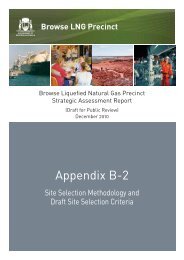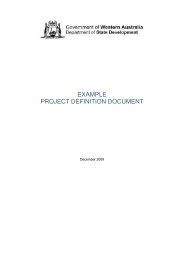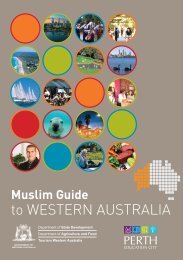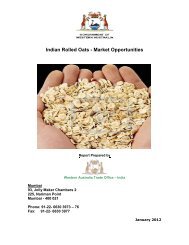Browse LNG Precinct - Public Information Booklet - Department of ...
Browse LNG Precinct - Public Information Booklet - Department of ...
Browse LNG Precinct - Public Information Booklet - Department of ...
You also want an ePaper? Increase the reach of your titles
YUMPU automatically turns print PDFs into web optimized ePapers that Google loves.
<strong>Public</strong> <strong>Information</strong> <strong>Booklet</strong><br />
Traditional Owner and <strong>Public</strong> Access<br />
Questions:<br />
� With respect to the complete site ñ what are the exclusion zone requirements<br />
and what can/canít people access?<br />
� Explain the buffer zone<br />
� What can/canít occur in the buffer zone outside the fenced area?<br />
� Is camping permitted in the buffer zone?<br />
� Are Traditional Owners allowed to access the buffer zone for fishing and<br />
hunting activities?<br />
� Will harvesting and gathering <strong>of</strong> food be restricted in buffer zones?<br />
� What kind <strong>of</strong> proximity restrictions will there be on people near the plant?<br />
Access to the <strong>Precinct</strong> will be restricted by a fenced boundary. This is limited to the <strong>LNG</strong><br />
facilities and associated common user facilities. The Heads <strong>of</strong> Agreement with the KLC<br />
limits this to a maximum <strong>of</strong> 2,500 hectares with a requirement to minimise it where<br />
practicable (note that the foundation development would have an initial fenced area much<br />
smaller than this).<br />
Areas outside the <strong>Precinct</strong> fence are not managed and controlled by the facility<br />
Proponents. Buffer zones beyond the <strong>Precinct</strong> boundary are established by the<br />
Environmental Protection Authority for land planning and development purposes. The<br />
buffer zones are defined to address separation distances between industrial and sensitive<br />
land uses with a focus to protect sensitive land uses from unacceptable impacts resulting<br />
from industrial activities, emissions and infrastructure. Sensitive land uses, as defined by<br />
the Environmental Protection Authority, include residential development, hospitals, hotels,<br />
motels, hostels, caravan parks, schools, nursing homes, child care facilities, shopping<br />
centres, playgrounds, retail outlets, <strong>of</strong>fices and training centres.<br />
The buffer areas are unfenced and public access is not restricted. Activities such as<br />
harvesting and gathering <strong>of</strong> food; driving, walking and fishing can occur in the buffer<br />
zones. People undertaking activities in the buffer zone will have to abide by local laws<br />
and regulations as in any other area. The definition <strong>of</strong> sensitive land use does not restrict<br />
camping within the buffer areas.<br />
5279225 44









